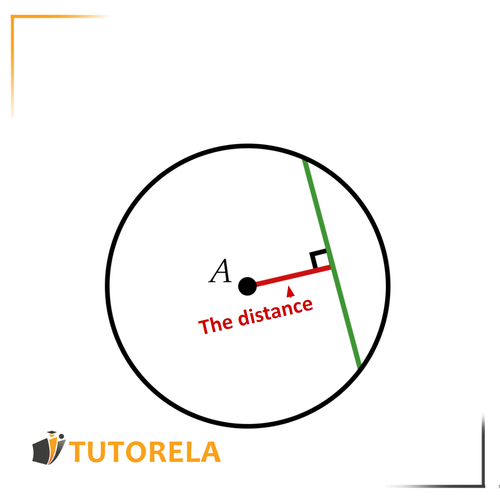The distance from the chord to the center of the circle is defined as the length of the perpendicular from the center of the circle to the chord.
Theorems on the distance from the center of the circle:
- Chords that are equal to each other are equidistant from the center of the circle.
- If in a circle, the distance of a chord from the center of the circle is less than the distance of another chord from the center of the circle, we can determine that the chord with the lesser distance is longer than the other chord.

All theorems can also exist in reverse.